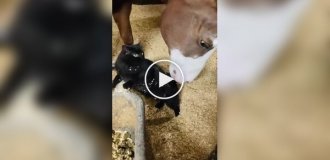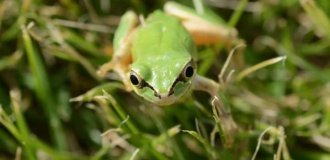Trumpeter swan: a bird that is better not to offend (11 photos)
The trumpeter swan is one of the largest species of swans, living in North America. Behind the beautiful appearance hides a bird with character, capable of repelling many predators approaching her. 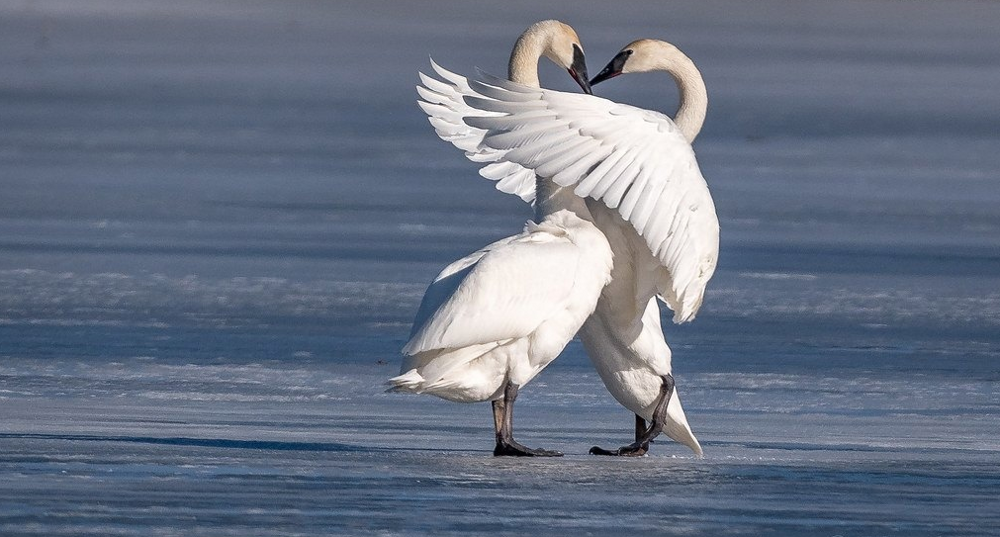
You also still think swans are fragile and gentle birds? Then the trumpeters are coming to you! These birds aggressors can attack not only all the birds in the area, but also to thoroughly finish off the encroaching predators! Even to a person It is strongly recommended not to approach nesting sites swans. And why? That's right, because trumpeters are not just “wow, how beautiful”, but also as much as 17 kilograms feathers and fury!
The trumpeter swan is an American analogue of the familiar whooper swan. It is quite simple to distinguish between two types of birds: trumpeters live over the hill, and whoopers are registered in Eurasia. If we talk about appearance, then the Americans the completely black beak and dark legs contrast perfectly with classic snow-white plumage. You can also our heroes distinguished by characteristic cries: the trumpeter’s voice is similar to the symphony of a car horn, a yellow toy chicken and pipes. 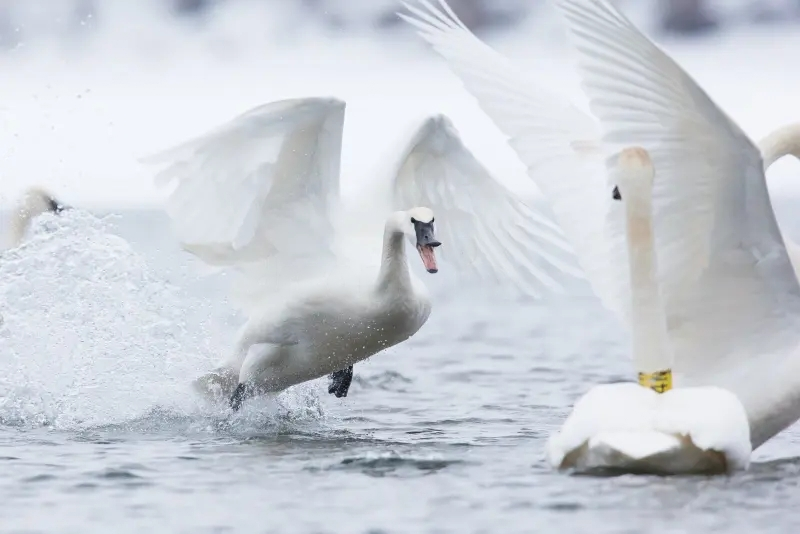
But what cannot be taken away from trumpet players is the title heaviest bird in North America and the title of one one of the largest flying birds in the world. Only imagine: males can reach 183 centimeters in length from the tip of the beak to the tail, have a 3-meter wingspan and weigh more than 17 kilograms! The winches are a little smaller but they can pile on just as well! 
Helps birds grow to record sizes mixed diet. For the first couple of months of life, young animals eat clean proteins - caviar, small fish and crustaceans. With age, the proportion of plant matter in the bird's diet increases. food: birds eat leaves, stems and roots of algae. 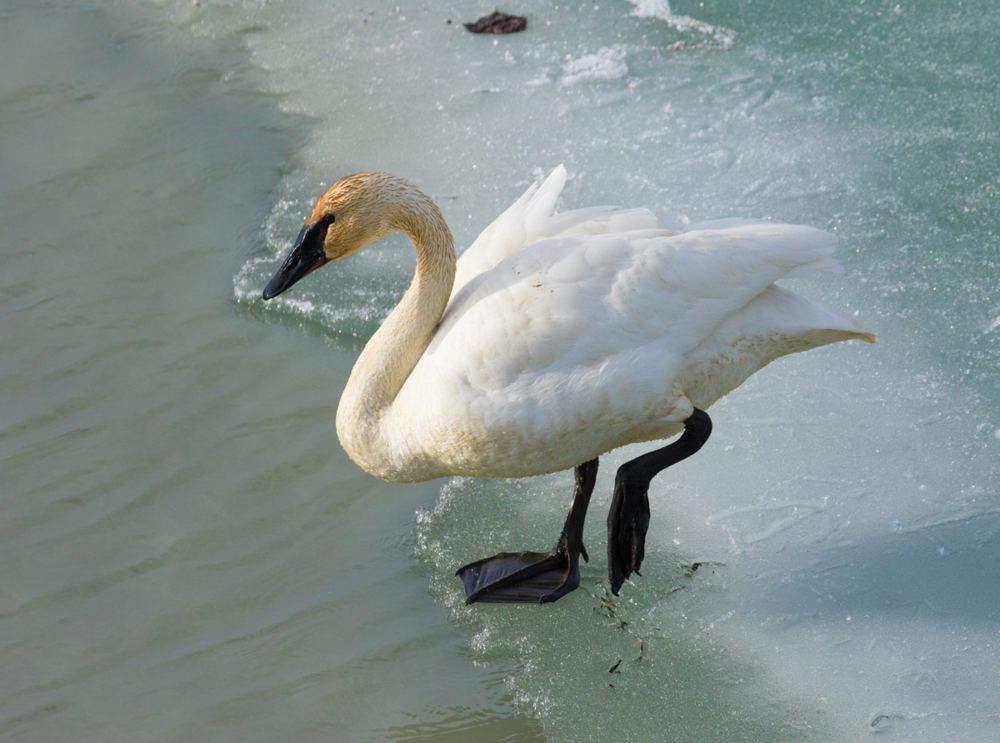
Therefore, by the way, sometimes you can see trumpeters with an unusual coloring, when the whole carcass is white, and the head and neck are orange-gray. Bye birds obtain food by digging in the bottom sediments of a reservoir, feathers are painted in brown shades.
Due to their size, the birds feel very at ease in wild nature. Local predators only target eggs and young. To successfully attack an adult whelk, you need be at least heavier and more agile than him. For land-based meat eaters, this the mission is almost impossible. Birds fiercely defend themselves: they bite and hit wings with such force that they can break an opponent's bones. 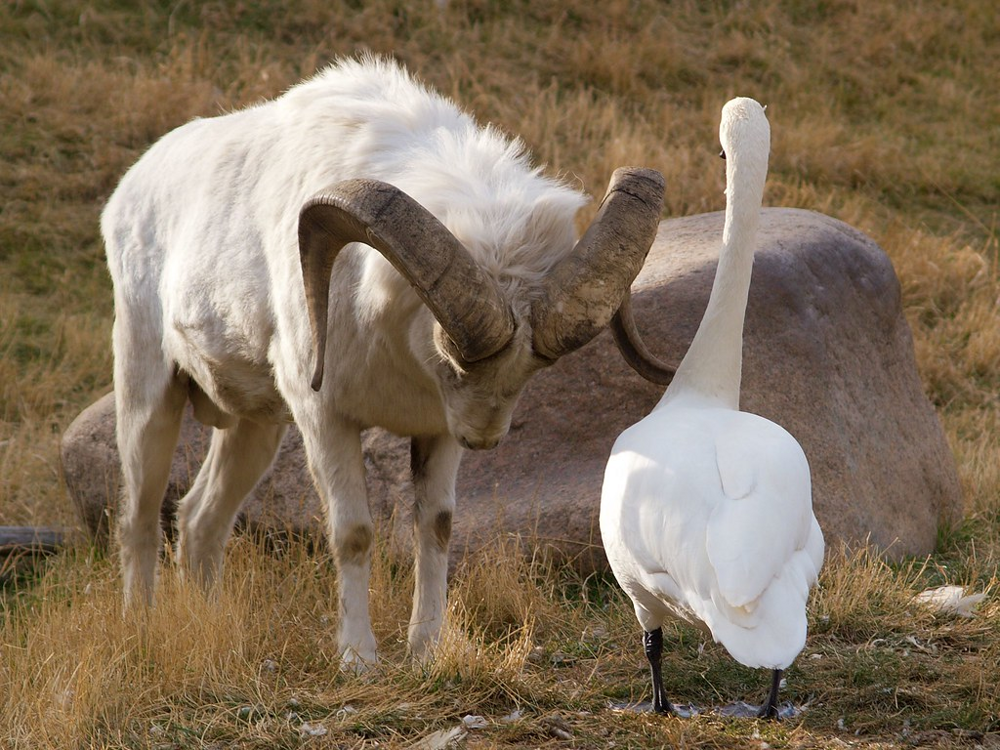
Scientists have observed several times how birds handed out cradles coyotes, but only once was it possible to record how a coyote killed a swan. And this despite the fact that the birds were already injured! In the air There are no more people willing to attack the trumpeters. In theory, win bald eagles and golden eagles can defeat them, but there have been no recorded cases of successful hunting of adult birds so far that there wasn't. 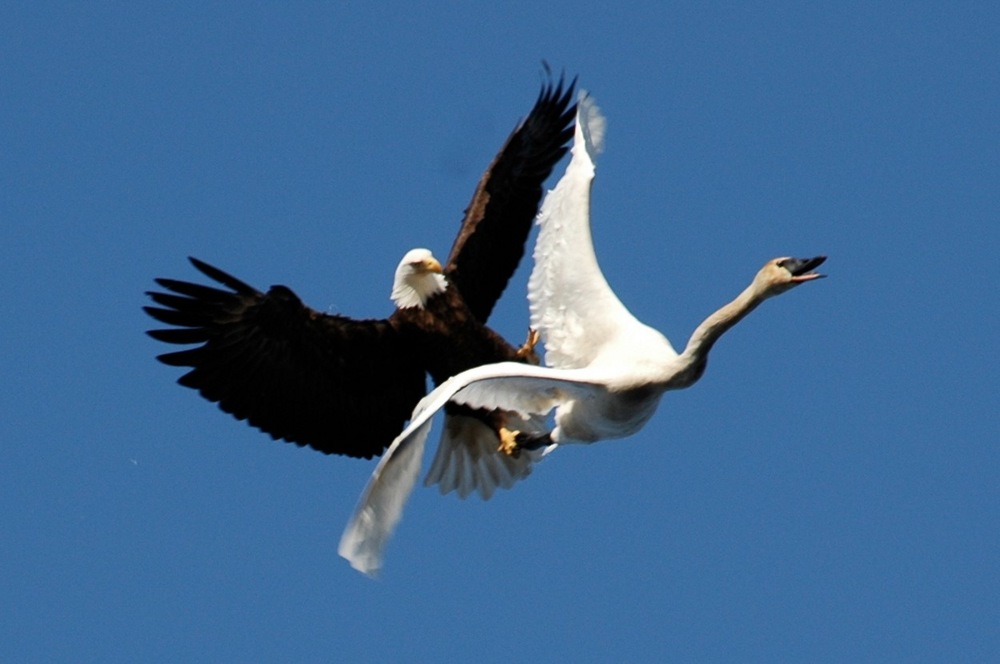
One of the few moments when the trumpeter was in danger.
Yes, large dimensions perfectly protect birds from predators, but this also has its downsides. For example, It is quite difficult for swans to take off. To take off or land, the trumpeter needs at least 100 meters of water surface to run up and gain the necessary speed. For comparison - one of the shortest The length of runways in the world is 396 meters. It is used for small aircraft weighing at 3500 kilograms. Swans weigh 200 times less, but they need almost as much space to run around! 
Birds require no less scope and during reproduction. When do swans start mating season, they turn into tyrants. White and fluffy furiously chase not only potential predators, but also all other birds in the area - places swans and their future offspring need plenty of food. 
No sadism or violence! I'm just helping the duck wash himself!
The beginning of the end for those who surround the swans begins at the end of April, when the trumpeters split into pairs. Males They go after the female they like: They sing and flap their wings and bow. If the courtship is accepted, the couple remains together. "Divorce"possible in rare cases. For example, if birds For several years in a row they cannot have chicks. And here in the case when one partner dies, females most often find yourself a new boyfriend. Males remain swan-like faithful, remaining alone. 
After the wedding, the birds begin to nest construction. This process lasts by bird standards well, for a very long time - sometimes more than a month. But the result of that worth: the gigantic building reaches up to 3.6 meters in diameter. So that there is definitely enough space for everyone!
Finally, the female lays 4-6 very large eggs weighing up to 320 grams. Some scientists call swan eggs the most largest among those that flying birds can carry. For comparison, eggs Andean condors (the average weight of adult birds of this species is approximately equal to a swan) less by 20%. And the African bustard, which is comparable in size to trumpeters, eggs weigh half less. 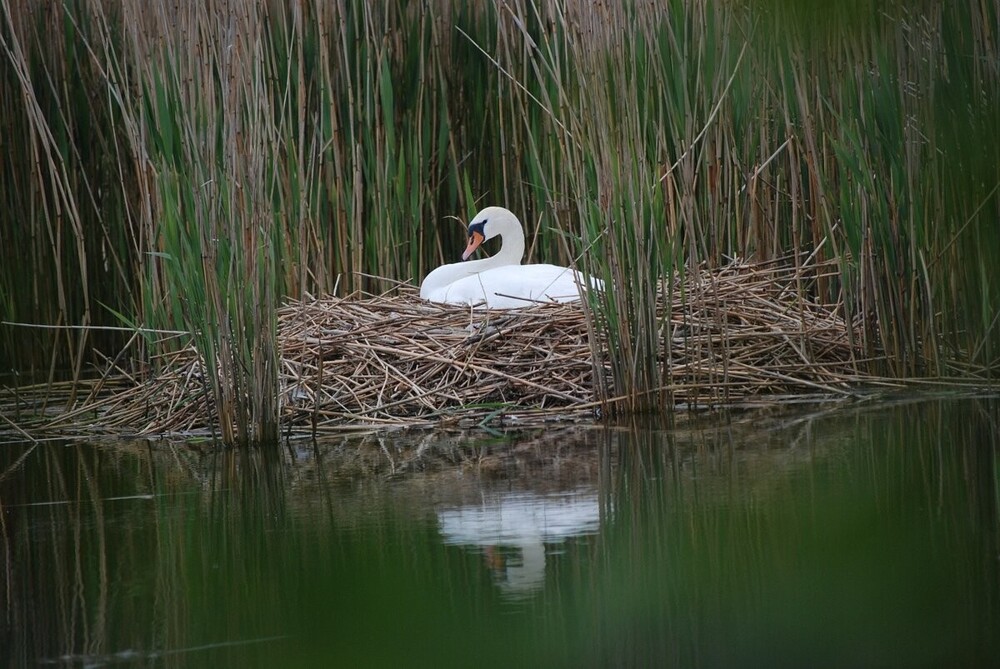
Although a whooper swan is depicted here, the photograph gives an idea of the scale of the construction work and the size of the nest.
Incubation of swans lasts about a month. All 30 days the expectant mother will spend time in the nest. Dad will protect territory, handing out gingerbread to everyone who dares to approach to his family. With the arrival of the swans, both parents will accept participation in their upbringing: teaching them to find food, swim and fly. At first, kids are very dependent on adults and the presence of water, because their paws are still too weak to run on the ground. 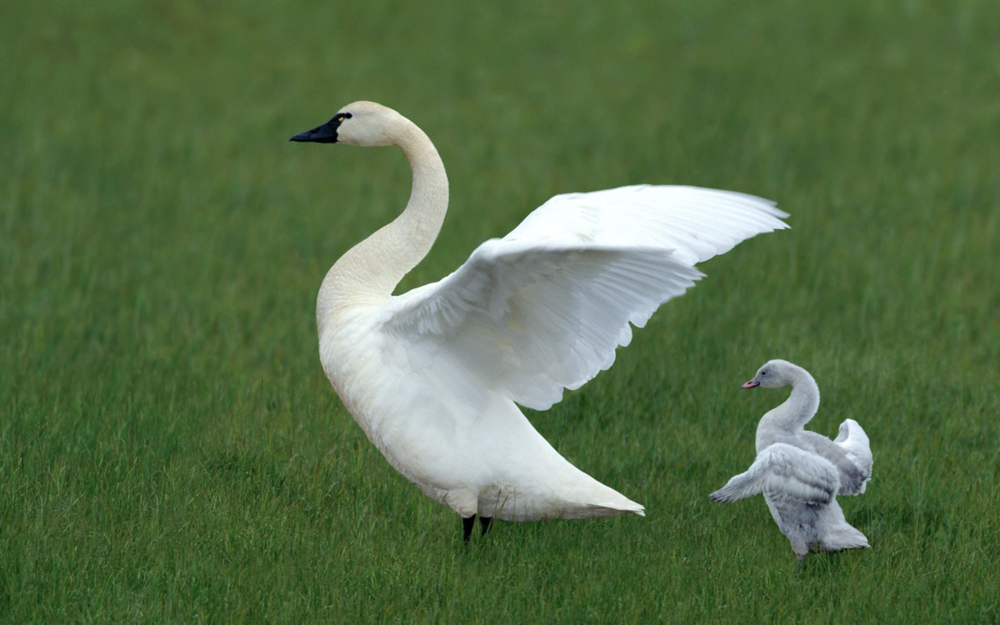
Repeat after mom! You will be strong, beautiful and all the inhabitants of reservoirs will be afraid of you!
After 2 weeks of parental care, the chicks will be able to get your own food. And after 4 months they will be fully feathered and will be ready to fly. The chicks will spend time with their parents autumn and winter, after which they will become completely independent. They will begin to mate at 4-7 years of age, and will survive in the wild. nature will be able to live up to about 24 years.
To date, the trumpeters are not in danger. Previously, these swans were hunted on a massive scale and in some places they They even became extinct, but that is now behind us. In many states Activities are being carried out to reintroduce birds to their former places habitats and laws are adopted to preserve the species.




